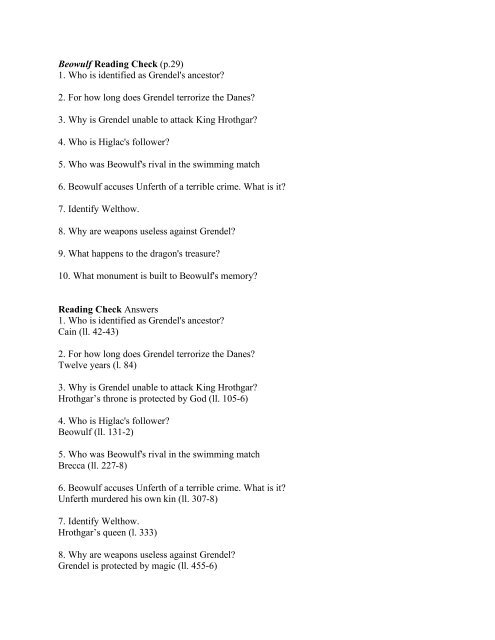Beowulf Italiano Pdf
Xender apps download on mobile9 free Apk app 2019 Xender is one of the fastest file transferring apps available for devices based on Android, IOS, Windows platforms. It minimizes the hassle of transferring any file to the devices without the use of any cable, wifi or cellular data. Xender apps download on mobile9. Xender apps download on mobile9 The developer of this application knows very well how to keep on words that is why Xender walks the talk in a most didactic way. The credibility it builds up in its users is the evidence of how vigilantly Xender works.
First page of Beowulf in Cotton Vitellius A. Xv Author(s) Unknown Language of Date c. 700–1000 AD (date of story), c. 975–1010 AD (date of manuscript) State of existence Manuscript suffered damage from fire in 1731 Manuscript(s) First printed edition (1815) Genre Epic heroic writing Verse form Length c. 3182 lines Subject The battles of Beowulf, the Geatish hero, in youth and old age Personages,,,,,,,,,,. Beowulf (; Old English: ) is an epic poem consisting of 3,182. It is arguably one of the most important works of.
Further Study. Test your knowledge of Beowulf with our quizzes and study questions, or go further with essays on the context and background and links to the best resources around the web. Beowulf (/ ˈ b eɪ ə w ʊ l f /; Old English: [ˈbeːo̯wulf]) is an Old English epic poem consisting of 3,182 alliterative lines.It is arguably one of the most important works of Old English literature.

The date of composition is a matter of contention among scholars; the only certain dating pertains to the manuscript, which was produced between 975 and 1025. The author was an anonymous poet, referred to by scholars as the ' Beowulf poet'. The story is set in., a hero of the, comes to the aid of Hrothgar, the king of the, whose in has been under attack by a monster known as. After Beowulf slays him, attacks the hall and is then also defeated.
Victorious, Beowulf goes home to Geatland ( in modern Sweden) and later becomes king of the Geats. After a period of fifty years has passed, Beowulf defeats a, but is mortally wounded in the battle. After his death, his attendants cremate his body and erect a tower on a headland in his memory. The full story survives in the manuscript known as the. It has no title in the original manuscript, but has become known by the name of the story's protagonist. In 1731, the manuscript was badly damaged by a fire that swept through in London that had a collection of medieval manuscripts assembled.
The Nowell Codex is currently housed in the. Approximate central regions of tribes mentioned in Beowulf, with the location of the in. See for details of Scandinavia's political fragmentation in the 6th century. The events in the poem take place over most of the sixth century, after the had started migrating to England and before the beginning of the seventh century, a time when the Anglo-Saxons were either newly arrived or were still in close contact with their in Northern Germany and southern Scandinavia.
The poem may have been brought to England by people of Geatish origins. Many suggest that Beowulf was first composed in the 7th century at in, that the also shows close connections with Scandinavia, and that the East Anglian royal dynasty, the, may have been descendants of the Geatish. Others have associated this poem with the court of King or with the court of King.
The poem deals with legends, was composed for entertainment, and does not separate between fictional elements and historic events, such as the raid by King into. Though Beowulf himself is not mentioned in any other Anglo-Saxon manuscript, scholars generally agree that many of the other figures referred to in Beowulf also appear in Scandinavian sources. (Specific works are designated in the following section).
This concerns not only individuals (e.g.,,,,, and ), but also (e.g.,, and Wulfings) and certain events (e.g., the ). In Denmark, recent archaeological excavations at, where Scandinavian tradition located the seat of the Scyldings, i.e.,, have revealed that a hall was built in the mid-6th century, exactly the time period of Beowulf. Three halls, each about 50 metres (160 ft) long, were found during the excavation.
The majority view appears to be that people such as King Hroðgar and the Scyldings in Beowulf are based on historical people from 6th-century Scandinavia. Like the and several shorter surviving poems, Beowulf has consequently been used as a source of information about Scandinavian figures such as Eadgils and Hygelac, and about continental Germanic figures such as, king of the continental. Finds from the western mound, left, excavated in 1874 at, Sweden, support Beowulf and the sagas. Bukvi dlya raspechatki na printere.
19th-century archaeological evidence may confirm elements of the Beowulf story. Was buried at according to. When the western mound (to the left in the photo) was excavated in 1874, the finds showed that a powerful man was buried in a large barrow, c. 575, on a bear skin with two dogs and rich grave offerings.